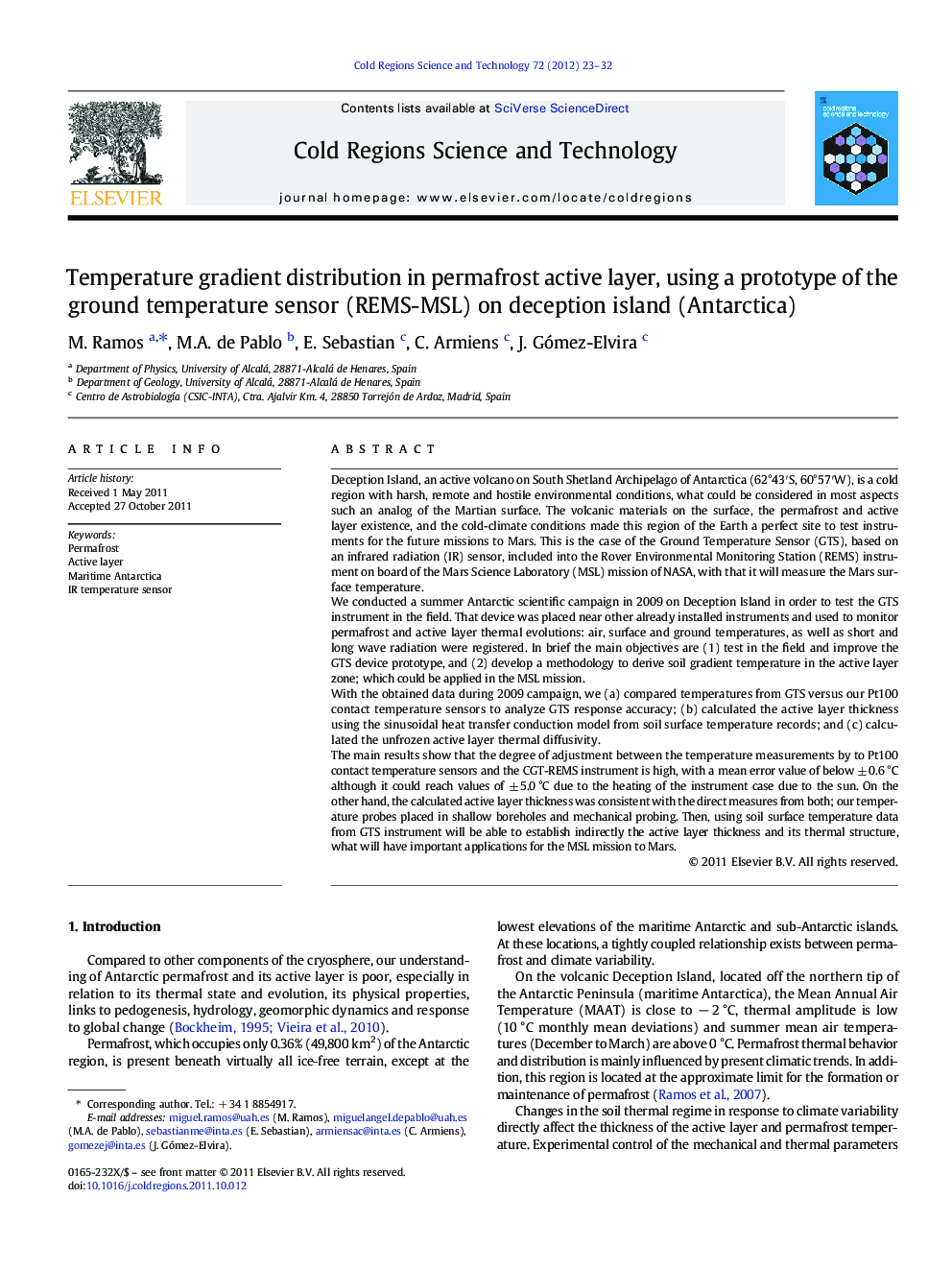| کد مقاله | کد نشریه | سال انتشار | مقاله انگلیسی | نسخه تمام متن |
|---|---|---|---|---|
| 4676036 | 1634485 | 2012 | 10 صفحه PDF | دانلود رایگان |

Deception Island, an active volcano on South Shetland Archipelago of Antarctica (62°43′S, 60°57′W), is a cold region with harsh, remote and hostile environmental conditions, what could be considered in most aspects such an analog of the Martian surface. The volcanic materials on the surface, the permafrost and active layer existence, and the cold-climate conditions made this region of the Earth a perfect site to test instruments for the future missions to Mars. This is the case of the Ground Temperature Sensor (GTS), based on an infrared radiation (IR) sensor, included into the Rover Environmental Monitoring Station (REMS) instrument on board of the Mars Science Laboratory (MSL) mission of NASA, with that it will measure the Mars surface temperature.We conducted a summer Antarctic scientific campaign in 2009 on Deception Island in order to test the GTS instrument in the field. That device was placed near other already installed instruments and used to monitor permafrost and active layer thermal evolutions: air, surface and ground temperatures, as well as short and long wave radiation were registered. In brief the main objectives are (1) test in the field and improve the GTS device prototype, and (2) develop a methodology to derive soil gradient temperature in the active layer zone; which could be applied in the MSL mission.With the obtained data during 2009 campaign, we (a) compared temperatures from GTS versus our Pt100 contact temperature sensors to analyze GTS response accuracy; (b) calculated the active layer thickness using the sinusoidal heat transfer conduction model from soil surface temperature records; and (c) calculated the unfrozen active layer thermal diffusivity.The main results show that the degree of adjustment between the temperature measurements by to Pt100 contact temperature sensors and the CGT-REMS instrument is high, with a mean error value of below ± 0.6 °C although it could reach values of ± 5.0 °C due to the heating of the instrument case due to the sun. On the other hand, the calculated active layer thickness was consistent with the direct measures from both; our temperature probes placed in shallow boreholes and mechanical probing. Then, using soil surface temperature data from GTS instrument will be able to establish indirectly the active layer thickness and its thermal structure, what will have important applications for the MSL mission to Mars.
► A prototype of Ground Temperature Surface GTS-REMS sensor was tested in Antarctic to study its accuracy in hard conditions.
► We calculate the active layer thickness with the aid of temperature recording data using heat transfer conduction model.
► Mars permafrost will be studied by mean of the soil surface temperature that will be measure by “Curiosity” NASA rover.
Journal: Cold Regions Science and Technology - Volume 72, March 2012, Pages 23–32